Santuario de la Realeza Jongmyo (종묘) [Patrimonio Cultural de la Humanidad de la Unesco]
10.6Km 2023-08-28
Jong-ro 157, Jongno-gu, Seúl.
El Santuario de la Realeza Jongmyo era el lugar de adoración de los reyes de la dinastía Joseon. Fue construido cuando el primer rey de Joseon, Lee Seong-Gye (1335-1408) fundó la dinastía. El Santuario de la Realeza Jongmyo se encuentra registrado como Patrimonio Cultural de la Humanidad porque la tradición y las costumbres tales como los servicios de conmemoración y la música tradicional entre otros, se hallan muy bien preservados.
Frente a la entrada principal del Santuario el sendero se divide en tres. La senda del medio, levemente más elevada que los de los lados, era para el difunto rey; la senda del lado este, para el rey en el gobierno; y la del lado oeste, para el príncipe. El sendero central se conecta a Jeongjeon, y los senderos de los lados, a las habitaciones donde se preparaban para el servicio de conmemoración una vez que habían consumado la ablución. Después de la preparación adecuada del cuerpo y mente, el rey y el príncipe se trasladaban a Jeonsacheong. Jeonsacheong era el lugar donde se preparaba la comida para la ceremonia. Con un patio en el centro, el edificio de Jeonsacheong tenía la forma de un cuadrado. El edificio principal, Jeongjeon era donde se preservaban las lápidas mortuorias de los reyes anteriores y la sede de ejecución de las ceremonias de conmemoración. Solamente este lugar ha mantenido durante tan largo tiempo su tradición, pese a que la costumbre de celebrar la memoria de los monarcas exitosos se haya trasmitido originalmente desde China. Jeongjeon tiene 19 habitáculos y en cada uno se adora a los reyes de la Joseon. Dentro de una pared de Jeongjeon se halla el Gongsinjeong, donde se preservan los restos de los servidores más fieles al rey.
La música de los servicios conmemorativos del Santuario de la Realeza Jongmyo es el resultado armónico de los sonidos instrumentales, el canto, y las danzas que se han transmitido por 500 años. La melodía se logra en la misma forma que hace cinco siglos atrás. Entre las ceremonias completas, esta es la más antigua del mundo y tiene lugar cada primer domingo de mayo. Si está de viaje por Corea en esas fechas, puede ser una excelente oportunidad para observar la solemnidad y grandeza de una ceremonia tradicional tan antigua.
Uraeok (우래옥)
10.6Km 2021-03-24
62-29, Changgyeonggung-ro, Jung-gu, Seoul
+82-2-2265-0151
This 2020 Michelin Guide restaurant specializes in Pyongyang-style naengmyeon (Korean cold noodle). The best menu at this restaurant is pyeongyang cold buckwheat noodles. This Korean dishes restaurant is located in Jung-gu, Seoul.
Bungmakgol (북막골)
10.6Km 2021-03-24
124-6, Samcheong-ro, Jongno-gu, Seoul
+82-2-730-0980
This is where you can enjoy Bossam (Korean boiled pork with cabbage or lettuce wraps) with roasted garlic. This restaurant's signature menu is napa wraps with pork. This Korean dishes restaurant is located in Jongno-gu, Seoul.
Darakjeong (다락정)
10.6Km 2021-03-26
131-1, Samcheong-ro, Jongno-gu, Seoul
+82-2-725-1697
Darakjeong has been popular for a long time because of the simple taste of its traditional Mandu (Korean stuffed dumpling). Since its opening in 1991, tasty soup and scrumptious Mandu have been served. A fist-sized Mandu is fully packed with seasoned meat, bean-curd, and various vegetables. Its thick dough makes it chewy and delightful. For one person, “Manduguk”(boiled dumpling soup) is a good choice. The delicious and nourishing taste of Mandu goes well with the sweet, spicy, and fresh taste of the soup. Manduguk is served in a brass bowl which keeps the food warm while eating. For a large-size group, “Mandujeongol” cooked with various vegetables in a casserole is recommended. There are two types of Mandujeongol that have different tastes. The main characteristic of “Kimchi Mandujeongol” is its spicy flavor, which reminds people of the refreshing taste of Kimchi soup, and “Tojang Mandujeongol” expounds on the savory taste of bean-paste soup. Tojang means folk soybean-paste. “Nokdujeon”(a Korean pan-fried dish with green mung bean) is another famous dish at Darakjeong, which is pan-fried with a very light seasoning to emphasize the original taste of Nokdu (green mung bean). Salted oysters with hot pepper are served with Nokdujeon instead of soy sauce, which is a perfect match.
Mercado Bangsan (방산 종합시장)
10.7Km 2024-01-23
Eulji-ro 33-gil 18-1, Jung-gu, Seúl
The Shilla Duty Free (Sucursal de Seúl) (신라면세점 (서울점))
10.7Km 2024-02-05
Dongho-ro 249, Jung-gu, Seúl.
Obok Dakhanmari - Euljiro Branch(오복닭한마리 을지로)
10.7Km 2021-04-15
32-3, Eulji-ro, 27-gil, Jung-gu, Seoul
+82-2-2285-4578
This is a Korean cuisine located in Cheonggyecheon Stream, Seoul. It sells boiled chicken in clear broth. The best menu at this restaurant is noodle soup with chicken.
Nunnamujip (눈나무집)
10.7Km 2020-06-16
136-1, Samcheong-ro, Jongno-gu, Seoul
+82-2-739-6742
Nunnamujip is famous for a North Korean dish called, “Kimchi mari guksu”, which is a noodle dish in cold kimchi soup containing toasted laver, a boiled egg, and sesame. The soup is refreshingly cold and a little spicy. For “Kimchi mari bap”, a bowl of rice is put into cold kimchi soup instead of noodles. The taste is very unique. In addition to Kimchimari, “Tteokgalbi” is a popular dish on the menu as well.
The main restaurant is located in the basement, which has only limited seating capacity with a few tables. As a result, many people usually wait in line for lunch or dinner. A second franchise has opened in a three-story building across the street. To enjoy a quaint atmosphere, the first establishment is better, but the new one’s interior design is much more modern and fancier, giving it a fresh altering look.
Inwoohouse [Korea Quality] / 인우하우스 [한국관광 품질인증]
10.7Km 2023-04-13
9, Gyedong 6-gil, Jongno-gu, Seoul
02-742-1115
Run by a couple hailing from Bukchon, Inwoo House is located in an alleyway in Gye-dong, Jongno-gu, which is part of Bukchon that is well-known for old hanok houses. Inwoo House, meaning 'the house of Inwoo,' is inhabited by the owner couple and eight-year-old son Inwoo and his younger brother Yeonwoo. The couple, who have always lived in Bukchon, moved to Inwoo House in 2010; their parents run another guesthouse -- Yeonwoo House -- in Gahoe-dong, which isn’t far from Inwoo House. These two hanok guesthouses seek to provide guests with an opportunity to experience the true aspect of traditional Korean house amid the natural environment. Inwoo House, which has the typical style of hanok in the area, features a cozy yard, a toenmaru (narrow wooden porch running along the outside of the building), and several charming decorative items. It has three rooms – Tokki-bang and Haejanggeum-bang situated in Sarangchae (a detached building) and Nori-bang, which is a communal space. Due to its quiet location, guests can enjoy relaxation with a serene atmosphere in their rooms, which are decorated with calligraphic works and furniture inlaid with mother-of-pearl in a simple way. Each room is equipped with a bathroom. The guesthouse offers breakfast such as toast or tteokguk (rice cake soup). Inwoo House is an ideal place to stay for guests with children as the owner couple have children with whom children can play in the alley, yard, or toenmaru with an interesting hanok environment. The guesthouse also provides various traditional activities including traditional Korean clothes experience, traditional Hanji (Korean paper) craft experience, traditional knot bracelet making, and fan decorating, which are popular among foreign tourists and children. It is adjacent to restaurants, coffee shops, convenience store, and other tourist attractions including Gyeongbokgung Palace, Changdeokgung Palace, Insa-dong, and Samcheong-dong.
Hangeureut (한그릇)
10.7Km 2021-03-18
136, Samcheong-ro, Jongno-gu, Seoul
+82-2-720-5613
A store that also serves delicious meat noodles. The best menu at this restaurant is rice soup. This is a Korean cuisine located in Jongno, Seoul.
![Santuario de la Realeza Jongmyo (종묘) [Patrimonio Cultural de la Humanidad de la Unesco]](http://tong.visitkorea.or.kr/cms/resource/41/2678541_image2_1.jpg)

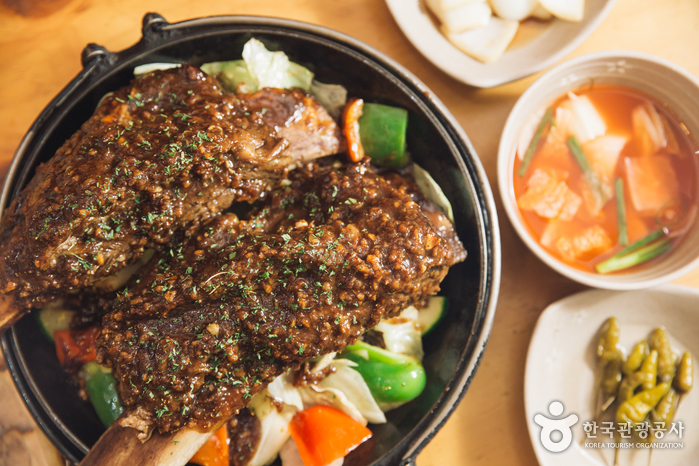
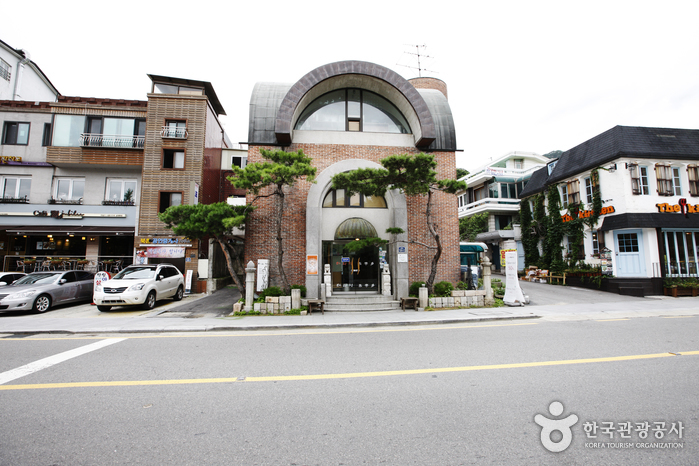

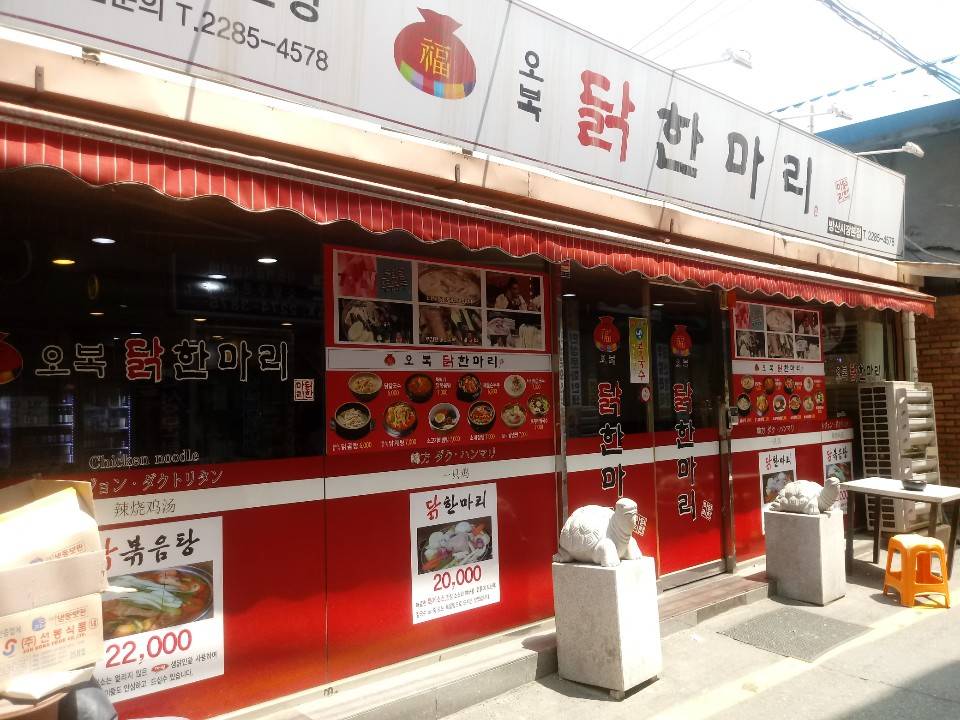
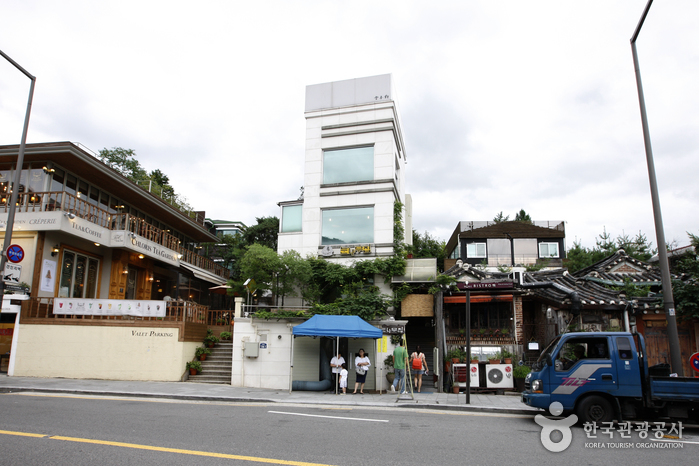
![Inwoohouse [Korea Quality] / 인우하우스 [한국관광 품질인증]](http://tong.visitkorea.or.kr/cms/resource/64/2633664_image2_1.jpg)
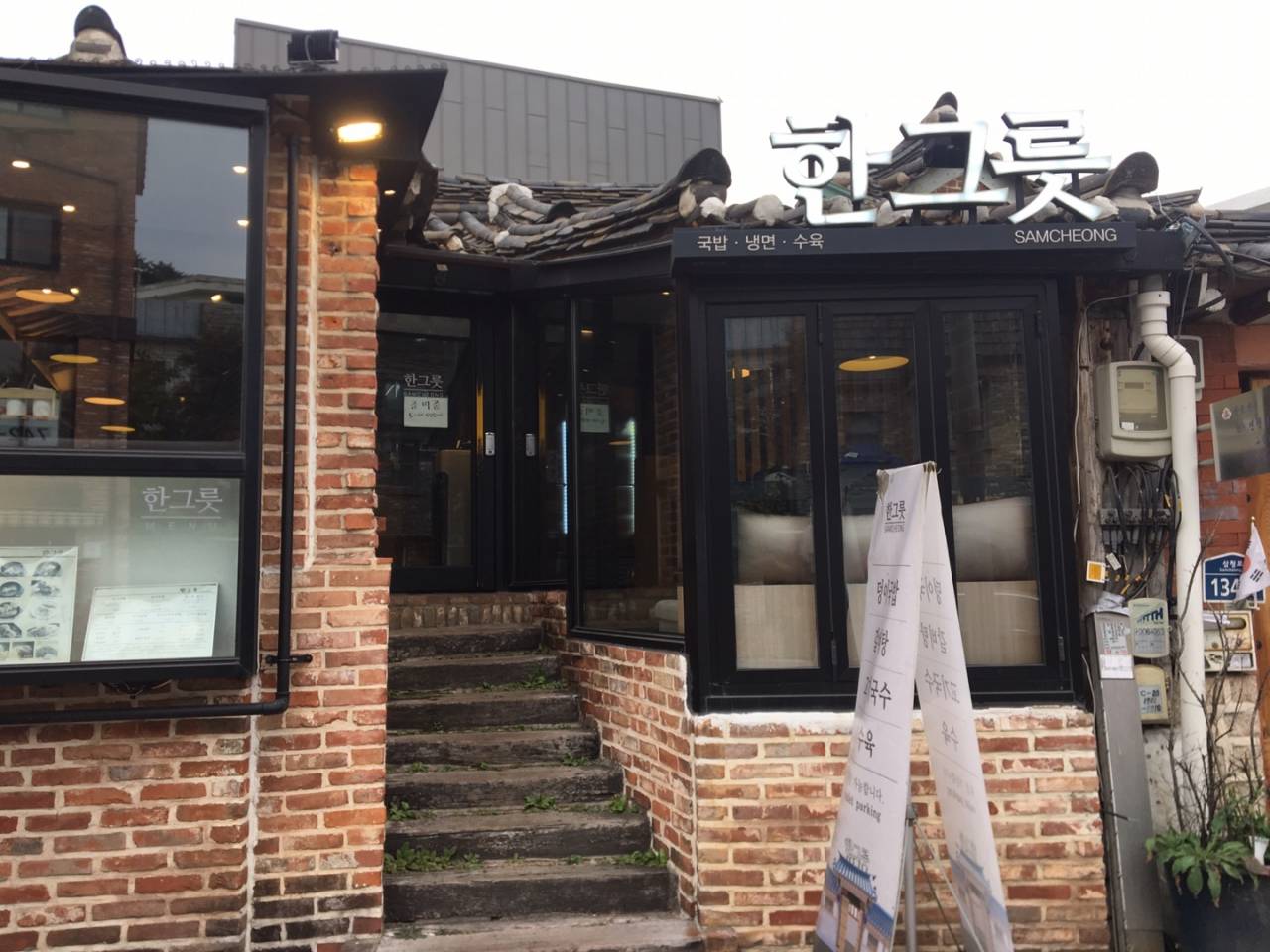
 Español
Español
 한국어
한국어 English
English 日本語
日本語 中文(简体)
中文(简体) Deutsch
Deutsch Français
Français Русский
Русский